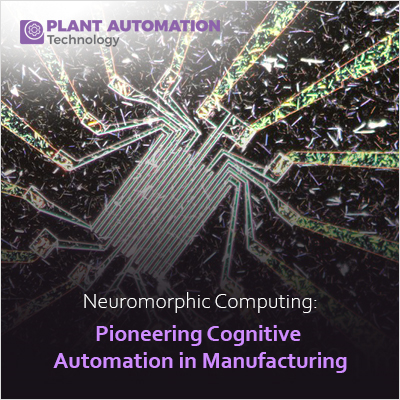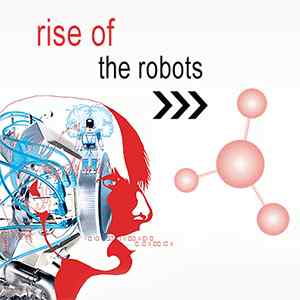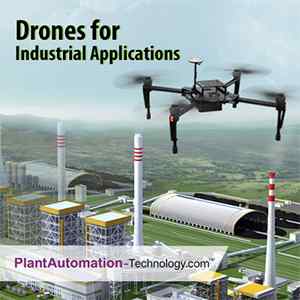Neuromorphic Computing: Pioneering Cognitive Automation in Manufacturing

Introduction:
Neuromorphic computing, inspired by the architecture of the human brain, is emerging as a revolutionary technology with profound implications for manufacturing automation. This article ventures into the potential of neuromorphic computing to achieve cognitive automation within manufacturing plants. We will delve into the core principles, advantages, and applications of computing architectures inspired by the human brain, illuminating how these systems enable machines to learn, adapt, and make real-time decisions. This exploration unveils the transformative impact of brain-inspired computing on the capabilities of automation in the manufacturing sector.
Understanding Neuromorphic Computing:
Neuromorphic computing mimics the structure and functioning of the human brain, utilizing artificial neural networks to process information. Unlike traditional computing, which relies on binary code, neuromorphic systems use interconnected neurons and synapses to perform complex tasks. This bio-inspired approach facilitates parallel processing, pattern recognition, and adaptive learning – qualities essential for cognitive automation.
Key Principles Driving Cognitive Automation:
Parallel Processing:
The key principle of parallel processing in neuromorphic computing refers to the ability of the system to handle multiple tasks simultaneously. In traditional computing, tasks are typically processed one after the other, sequentially. However, neuromorphic architectures mimic the parallel processing capabilities of the human brain.
In the human brain, various regions work simultaneously to process different aspects of information. Similarly, neuromorphic systems consist of interconnected artificial neurons and synapses that operate concurrently. This simultaneous processing allows the neuromorphic system to tackle multiple aspects of a problem at the same time, enhancing the speed and efficiency of tasks.
In the context of manufacturing operations, parallel processing in neuromorphic computing can, for example, enable a system to monitor and control various aspects of production simultaneously. This might involve overseeing multiple stages of a manufacturing process, analyzing data from different sensors, and making decisions in real-time. This efficiency mirrors the way the human brain can handle and coordinate numerous interconnected processes simultaneously, making it a valuable principle for enhancing the capabilities of automation in manufacturing.
Adaptive Learning:
Adaptive learning in neuromorphic systems refers to their capability to learn and improve from experience over time. Much like the human brain, these artificial systems can continuously adjust their behavior based on the data they are exposed to.
In practical terms for manufacturing, this means that as a neuromorphic system is exposed to various data inputs—such as production metrics, quality information, or environmental factors—it can analyze and recognize patterns within that data. Through continuous exposure, the system refines its understanding of the manufacturing processes, identifies correlations, and adapts its decision-making processes to optimize performance.
This adaptability is particularly valuable in dynamic manufacturing environments where conditions may change rapidly. A neuromorphic system's ability to autonomously learn and adapt enables it to respond effectively to new challenges, variations in production, or unforeseen circumstances. Essentially, adaptive learning allows these systems to improve their decision-making and operational efficiency in real-time based on the evolving data they receive.
Real-time Decision-Making:
Real-time decision-making in neuromorphic computing means that machines, inspired by the architecture of the human brain, can rapidly analyze and respond to incoming data without significant delay. Unlike traditional computing systems that may have a more sequential and time-consuming decision-making process, neuromorphic systems can make quick and contextually informed decisions.
In the context of manufacturing, where operational efficiency is critical, real-time decision-making allows neuromorphic systems to assess and interpret data as it is generated. For example, in a production line, these systems can promptly respond to changes in variables such as product demand, equipment status, or quality metrics. This agility is crucial for maintaining efficiency, minimizing downtime, and optimizing overall performance in dynamic manufacturing environments.
The inherent inspiration from the human brain in neuromorphic computing, coupled with its adept parallel processing and adaptive learning capabilities, empowers machines to swiftly analyze contextual information. This, in turn, facilitates the ability to make well-informed decisions in real-time, perfectly aligning with the rapid and responsive demands of contemporary manufacturing operations.
Applications in Manufacturing Plants:
1. Predictive Maintenance: Leveraging neuromorphic computing, predictive maintenance is elevated through the analysis of equipment data to discern patterns signaling potential failures. This proactive methodology minimizes downtime and prolongs the lifespan of machinery by preemptively addressing issues before they escalate.
2. Quality Control: Cognitive automation powered by neuromorphic computing excels in quality control processes. Machines can autonomously recognize and respond to variations in product quality, ensuring consistent and high-quality output.
3. Supply Chain Optimization: The adaptive learning capabilities of neuromorphic systems make them valuable in optimizing supply chain processes. These systems can analyze and predict demand fluctuations, streamline logistics, and enhance overall supply chain efficiency.
4. Energy Management: Cognitive automation facilitates intelligent energy management within manufacturing plants. Neuromorphic systems can dynamically adjust energy consumption based on production demands, contributing to sustainability goals and cost savings.
Challenges and Considerations in Neuromorphic Computing for Manufacturing Automation:
Hardware Complexity: Neuromorphic computing, inspired by the intricate neural architecture of the human brain, encounters a challenge in the complexity of its hardware. The design, fabrication, and integration of systems that replicate the brain's intricate neural connections are resource-intensive endeavors. Ongoing efforts in research and development focus on simplifying neuromorphic hardware design through the exploration of novel materials and architectures that strike a balance between complexity and practical implementation.
Streamlining the hardware intricacies is crucial for the widespread adoption and scalability of neuromorphic systems in manufacturing automation.
Power Consumption: An inherent challenge in neuromorphic computing lies in achieving energy efficiency, as continuous processing demands may lead to increased power consumption. Energy efficiency is critical for scalability and sustainable implementation. Researchers are actively working on optimizing algorithms and hardware to reduce power requirements. This involves innovations in low-power neuromorphic hardware designs and the development of energy-aware algorithms. Efforts in this realm aim to mitigate the challenges associated with power consumption, ensuring that neuromorphic systems are both effective and environmentally sustainable in manufacturing applications.
Ethical Considerations: As neuromorphic systems gain autonomy and decision-making capabilities, ethical considerations become paramount. Concerns related to accountability, transparency, and potential biases in learning processes necessitate careful examination to ensure responsible use in manufacturing environments. Ongoing efforts include the development of ethical frameworks and guidelines governing the use of neuromorphic computing. Emphasis is placed on transparency in algorithms, accountability mechanisms, and continuous ethical assessments to foster trust and responsible deployment of these advanced systems.
Data Security and Privacy: Within the domain of neuromorphic systems, where continuous data input is pivotal for adaptive learning, substantial concerns emerge regarding the security and privacy of data, especially in data-intensive manufacturing contexts. Ensuring the protection of this information from unauthorized access and potential misuse is of utmost importance. Ongoing initiatives are committed to deploying resilient encryption methods, implementing secure protocols for data storage, and establishing effective access control mechanisms.
Simultaneously, legal and regulatory frameworks are evolving to define standards that safeguard the privacy and security of manufacturing data processed by neuromorphic systems.
Scalability and Integration: Integrating neuromorphic systems into existing manufacturing environments and ensuring scalability for widespread adoption presents a significant challenge. Compatibility issues, interoperability with traditional systems, and the need for seamless integration must be carefully addressed. Ongoing efforts involve industry collaborations and standards development to streamline the integration process. Researchers are working towards creating adaptable neuromorphic systems that can coexist with conventional technologies, facilitating smoother scalability and integration into diverse manufacturing settings.
Conclusion:
In summary, neuromorphic computing signifies a transformative paradigm in manufacturing automation, introducing cognitive capabilities that harmonize with the requirements of contemporary, ever-changing production landscapes. As various industries increasingly recognize the potential of brain-inspired computing architectures, a new era of genuinely intelligent manufacturing emerges on the horizon, bringing the promise of heightened efficiency, adaptability, and competitiveness.







